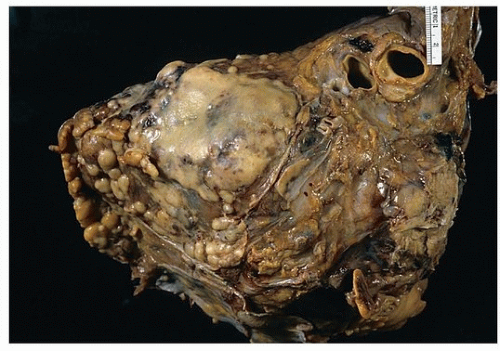Pericardial Mesothelioma
Allen P. Burke, M.D.
Terminology
Malignant mesotheliomas of the pericardium are malignant tumors derived from pericardial mesothelial cells and partly or completely encase the heart, with an absent or minor pleural component. The modifier “diffuse” is often applied to distinguish them from benign or low-grade more localized variants.
Of these unusual low-grade variants of mesothelioma, a case of multicystic mesothelioma of the pericardium has been reported,1 as well as a single well-differentiated papillary mesothelioma.2
In general, the vast majority of reported pericardial mesotheliomas have been of the epithelioid type, with few sarcomatoid variants described, including one desmoplastic type.3
Clinical Findings
Pericardial mesotheliomas account for <2% of all mesotheliomas.4 The mean patient age at presentation is in the fifth decade, with a male to female ratio of 2:1.5 Because of the rarity of the disease, the extent of the link between pericardial mesothelioma and asbestos exposure is unclear.6
Pericardial effusion is often initially asymptomatic, and many patients are initially diagnosed with pericarditis. Pericardial constriction and tamponade may occur as the disease progresses. The tumors are locally aggressive tumors that may extend to the pleura, venae cavae, mediastinum, and great arteries. Distant metastasis, such as to the liver, is uncommon.7,8
Gross Findings
These tumors grow along the visceral and parietal surfaces of the pericardium, eventually encasing the heart. There is generally relatively minimal invasion of the heart itself (Figs. 187.1, 187.2, 187.3).
Microscopic Findings
Stay updated, free articles. Join our Telegram channel

Full access? Get Clinical Tree



